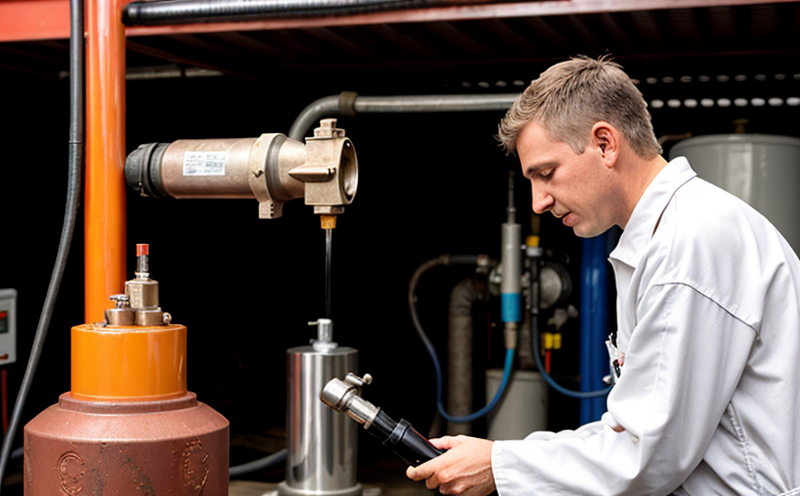ISO 2719 Flash Point Testing of Aviation Fuels
The ISO 2719 standard is a critical benchmark in the aviation fuel industry, ensuring that fuels meet stringent quality and safety standards. This test measures the flash point of aviation fuels, which is essential for identifying any potential hazards during storage and handling.
The flash point indicates the lowest temperature at which a liquid can vaporize to form an ignitable mixture with air near the surface of the liquid. For aviation fuels, this value must not be too low (as it could lead to fire hazards) nor too high (to ensure the fuel remains volatile enough for efficient combustion). This service is particularly important in sectors where safety and compliance are paramount.
The testing procedure involves heating a sample of aviation fuel until its vapor reaches a temperature that can ignite. The result is critical for quality managers, ensuring that fuels meet regulatory requirements set by organizations such as the International Civil Aviation Organization (ICAO).
Our laboratory adheres strictly to ISO 2719 guidelines, using state-of-the-art equipment and trained personnel to ensure accurate results. This service is crucial for compliance with international standards and for maintaining the safety of aviation operations.
Applied Standards
| Standard | Description |
|---|---|
| ISO 2719:2004 | The standard specifies the method for determining the flash point of petroleum products, including aviation fuels. |
Our laboratory ensures that all tests are conducted in accordance with ISO 2719 guidelines. This standard is widely recognized and used across the industry to ensure consistency and accuracy in testing.
Scope and Methodology
The process begins with the preparation of aviation fuel samples, which are typically taken from bulk storage tanks or shipping containers. The sample must be representative of the entire batch of fuel to ensure accurate results.
The testing apparatus used for this service includes a Pensky-Martindale flash cup, which is heated uniformly around the edges by means of an external flame. The temperature at ignition point is recorded as the flash point of the fuel.
- Sample preparation
- Heating and vaporization
- Capture and ignition of vapors
- Recording the temperature at which ignition occurs
The results are then analyzed by our technical team, who ensure that all specifications meet the required standards. Compliance with ISO 2719 ensures that aviation fuels can be safely used in aircraft engines without risking fire or other hazards.
Environmental and Sustainability Contributions
- The accurate identification of flash points helps prevent fuel-related accidents, which are harmful to the environment.
- Compliance with ISO standards ensures that fuels meet international environmental regulations.
- Our testing contributes to the safe operation of aircraft, reducing risks associated with improper fuel handling and storage.
By ensuring the quality and safety of aviation fuels through precise flash point testing, we contribute to a more sustainable and safer aviation industry. Our laboratory is dedicated to minimizing environmental impact while providing reliable test results that meet regulatory standards.





